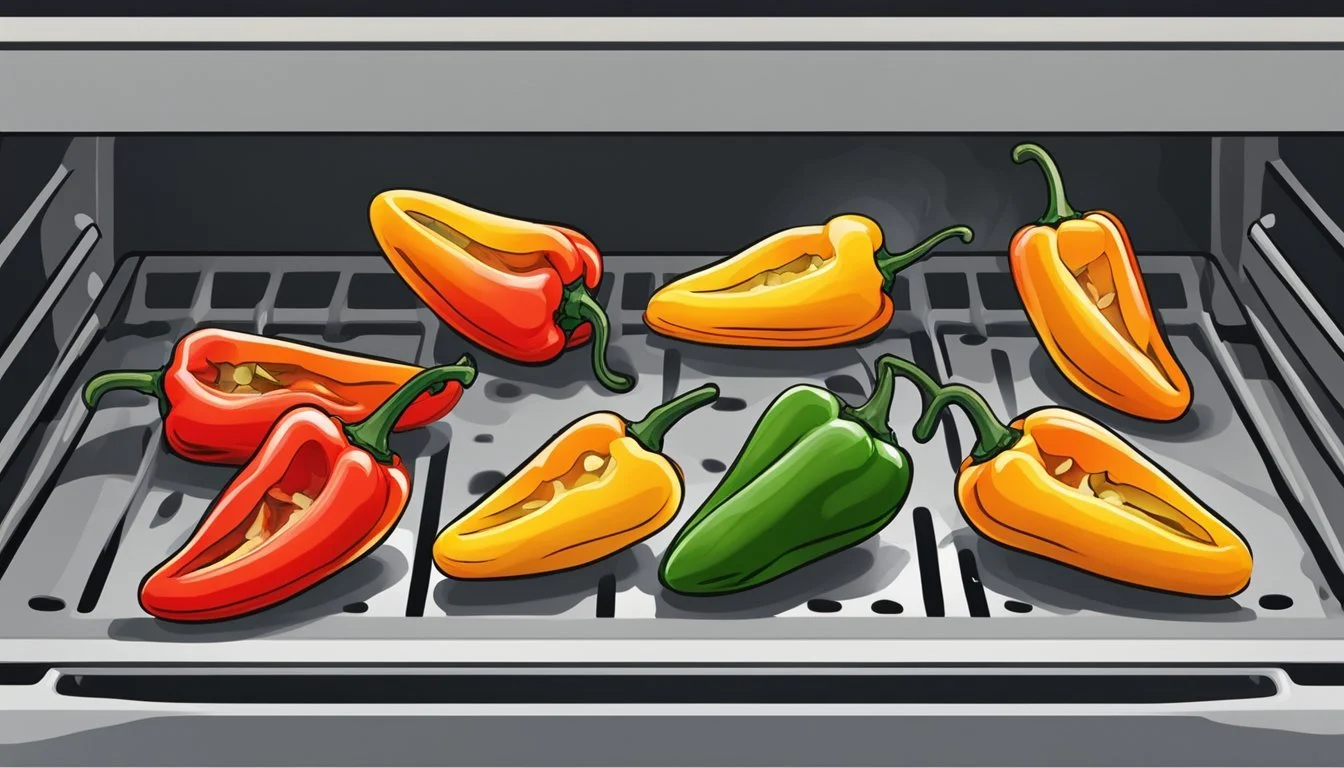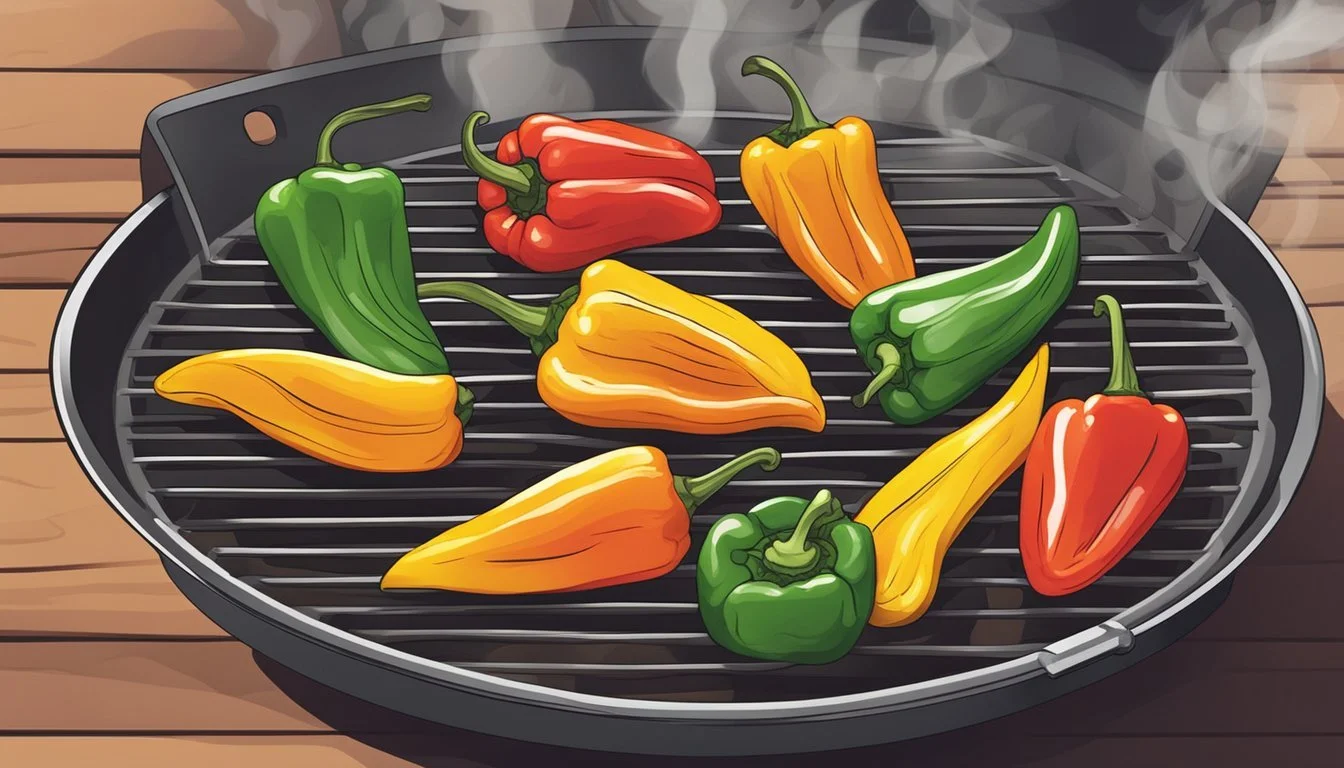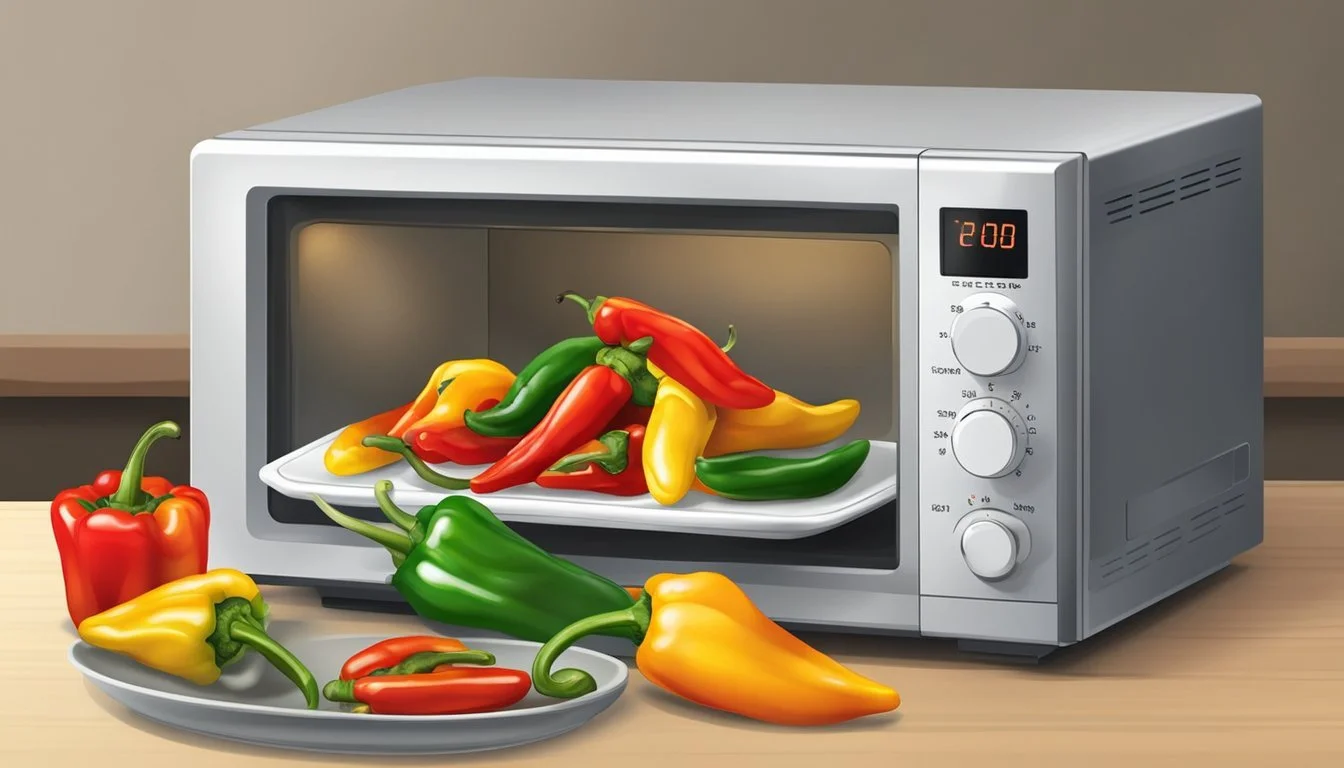How to Reheat Gluten-Free Grilled Peppers for Optimal Flavor and Texture
Reheating gluten-free grilled peppers ensures they retain their delicious flavors and textures. The best way to reheat gluten-free grilled peppers is by using the oven at 350°F for about 10-12 minutes. This method evenly warms the peppers without making them soggy or rubbery.
For quick reheating, the microwave is a convenient option. Placing the peppers on a microwave-safe dish and heating them for 1-2 minutes can quickly make them ready to eat.
An alternative method is using the stovetop. Heat a skillet over medium heat, add a small amount of olive oil, and warm the peppers for about 5 minutes, turning occasionally. This keeps the peppers' texture intact and brings out their flavors effectively.
Understanding Gluten-Free Diet and Grilled Peppers
Gluten-free diets and the inclusion of grilled peppers offer significant benefits. Bell peppers are naturally gluten-free, making them ideal for those with gluten intolerance. Additionally, they are highly nutritious and versatile as a delicious side dish.
What Makes Peppers Gluten-Free?
Bell peppers are inherently gluten-free. Gluten, a protein found in wheat, barley, and rye, is not present in any type of pepper. This makes peppers a perfect ingredient for those adhering to a gluten-free or vegan diet.
When grilling bell peppers, it's crucial to avoid cross-contact with gluten-containing ingredients. Designate specific utensils and cooking areas to ensure the peppers remain free from gluten contamination. Using tinfoil can create a barrier between the peppers and the grill.
Health Benefits of Grilled Bell Peppers
Grilled bell peppers are not only delicious but also packed with nutrition. They are rich in vitamins A and C, which are essential for immune function and skin health. Additionally, they provide antioxidants that help combat oxidative stress.
Including grilled bell peppers in your meals can boost fiber intake, aiding in digestion. Their low-calorie content makes them a healthy and satisfying side dish. Grilling enhances their natural sweetness, making them a flavorful addition to a gluten-free diet.
Preparing to Reheat Grilled Peppers
Reheating grilled peppers involves selecting the right ingredients and following specific pre-reheating instructions to maintain flavor and texture. Ensuring proper preparation will guarantee a tasty and satisfying meal.
Selection of Ingredients
Begin by choosing fresh and high-quality ingredients. When preparing to reheat grilled peppers, having olive oil or avocado oil on hand is crucial as these oils can enhance flavor while preventing sticking during the reheating process.
Use kosher salt and black pepper for seasoning. These basic spices bring out the natural flavor of the peppers.
Adding herbs like basil or thyme can also elevate the taste. For those who enjoy a bit of heat, incorporating a dash of red pepper flakes can be a great option.
Pre-Reheating Instructions
Before reheating, ensure that the peppers are evenly coated with a light layer of oil. This can be achieved using a brush or by tossing the peppers in a bowl with the oil.
Heat a skillet over medium heat. Add a tablespoon of water or broth to create steam. This ensures that the peppers do not dry out and helps in maintaining their texture.
Place the peppers in the skillet and cover with a lid to trap the steam. Reheat for about 3-5 minutes, or until they are thoroughly warmed.
For an added touch, you can sprinkle freshly chopped herbs over the peppers just before serving.
Reheating Techniques for Grilled Peppers
Reheating grilled peppers can be done using several methods, each with its unique benefits. The following techniques ensure that the flavors and textures of the grilled peppers are maintained during the reheating process.
Oven Reheating Method
Preheat the oven to 375°F (190°C). Place the grilled peppers on a baking sheet lined with aluminum foil. This helps to retain moisture and prevent drying out during reheating. Cover the peppers with another layer of foil to trap steam.
Heat the peppers for 10-15 minutes. Check occasionally to ensure they are not overcooked. This method is effective for evenly reheating larger quantities without losing the grilled flavor.
Stovetop Reheating Method
Preheat a skillet over medium heat. Add 1-2 tablespoons of water or vegetable broth to the skillet to create steam. Immediately add the grilled peppers and cover with a lid.
Reheat for about 5-7 minutes, stirring occasionally. The lid helps to trap steam, maintaining moisture and preventing the peppers from becoming too dry. This method is quick and suitable for smaller portions.
Grill Reheating Method
Preheat the grill to medium-high heat (around 375°F to 450°F). Place the leftover grilled peppers on a grill basket or a piece of aluminum foil with holes pricked in it to create a makeshift tray.
Reheat the peppers for 5-10 minutes, turning occasionally to ensure even reheating. This method helps retain the authentic grilled taste and is ideal if you're already using the grill for other foods.
Microwave Reheating Method
Place the grilled peppers in a microwave-safe dish. Cover them with a damp paper towel to prevent drying out. Set the microwave to medium power.
Heat for 1-2 minutes, checking midway to avoid overheating. The microwave is the fastest method but can sometimes compromise the texture, making this option best for quick, single servings.
Serving and Pairing
Reheated gluten-free grilled peppers can be paired with a variety of dishes to create a satisfying and balanced meal. They also present beautifully, making them a delightful addition to any table.
Accompaniment Suggestions
Grilled peppers complement numerous main courses and side dishes. For a protein-rich meal, pair them with grilled chicken, grilled salmon, or grilled shrimp. The smoky flavor of the peppers enhances these grilled proteins perfectly.
They also work well in burgers, adding a sweet and smoky flair to the sandwich.
For a Mexican twist, include them in tacos or fajitas. Their natural sweetness contrasts nicely with spicy or savory fillings. Alternatively, use them to top a summer side dish or add them to a salad for an extra burst of flavor.
Presentation Tips
To present reheated grilled peppers attractively, consider arranging them on a bed of fresh greens. This not only adds color contrast but also keeps the dish gluten-free.
Drizzle the peppers with a light vinaigrette or olive oil and vinegar for added zest. Garnish with feta cheese or burrata for a creamy texture that pairs well with the peppers' sweetness.
For a crunchy element, sprinkle with toasted breadcrumbs. Using a rustic or cast-iron skillet for serving can keep the dish warm and provide a charming, homey feel.
Customizing Your Dish
Customizing your gluten-free grilled peppers allows you to explore a variety of flavors and textures. Simple tweaks can elevate your dish by incorporating different seasonings or adding proteins and additional vegetables for a more complete meal.
Alternative Seasoning Ideas
Experiment with various seasonings to enhance the taste of your grilled peppers. Typical options include salt and pepper, but incorporating herbs like basil and oregano can add a Mediterranean flair. For a smoky touch, consider using paprika and garlic powder.
Drizzling some olive oil before adding dry seasonings helps the flavors integrate better. A squeeze of fresh lime juice at the end brightens up the dish and balances the earthy flavors. Adjusting these ingredients allows for a personalized touch, making the peppers uniquely yours.
Adding Proteins and Other Vegetables
To turn your grilled peppers into a more substantial meal, think about adding proteins and complementary vegetables. Grilled shrimp or chicken are excellent options, providing lean protein without overpowering the peppers' natural sweetness.
Include vegetables such as zucchini, onions, and tomatoes to add color and variety. Using a grill basket can simplify the process, allowing everything to cook evenly without falling through the grill grates. Another great addition is avocado, either grilled or fresh, contributing creaminess and healthy fats.
By mixing and matching these ingredients, you can create a balanced, nutritious, and flavorful dish that suits your dietary needs and preferences.
Enhancing Your Grilling Technique
Achieving perfect gluten-free grilled peppers involves selecting the right equipment and mastering the grilling process. Attention to detail is key to ensuring delicious, smoky flavors.
Selecting the Right Grill and Equipment
Choosing the proper grill and equipment greatly impacts the outcome. Gas and charcoal grills each offer unique benefits: gas provides convenience, while charcoal imparts a rich, smoky flavor. Grill grates ensure even heat distribution and prevent sticking.
Using a grill basket can help manage smaller pieces of pepper, avoiding them falling through the grates. Foil is useful for creating a steaming packet that retains moisture and flavor. Skewers are handy when grilling a mix of vegetables, keeping them together. A cutting board dedicated solely to gluten-free foods prevents cross-contact. Ensuring cleanliness and proper maintenance of equipment is crucial in preventing contamination.
Mastering the Grilling Process
Prepping peppers correctly enhances their taste and texture. Begin by cutting them into uniform pieces for even cooking. Coat the peppers lightly with olive oil for a better char and flavor absorption.
Preheat the grill to medium-high heat. For best results, place the peppers directly on the grill grates or use a grill basket. Use tongs to turn them occasionally, ensuring they cook evenly. The peppers are ready when they have visible char marks and are tender.
For additional smoky flavor, consider adding soaked wood chips to a charcoal grill. This infuses the peppers with a deeper, richer taste. Always keep an eye on the grill to avoid overcooking, ensuring the peppers remain crisp and flavorful.






